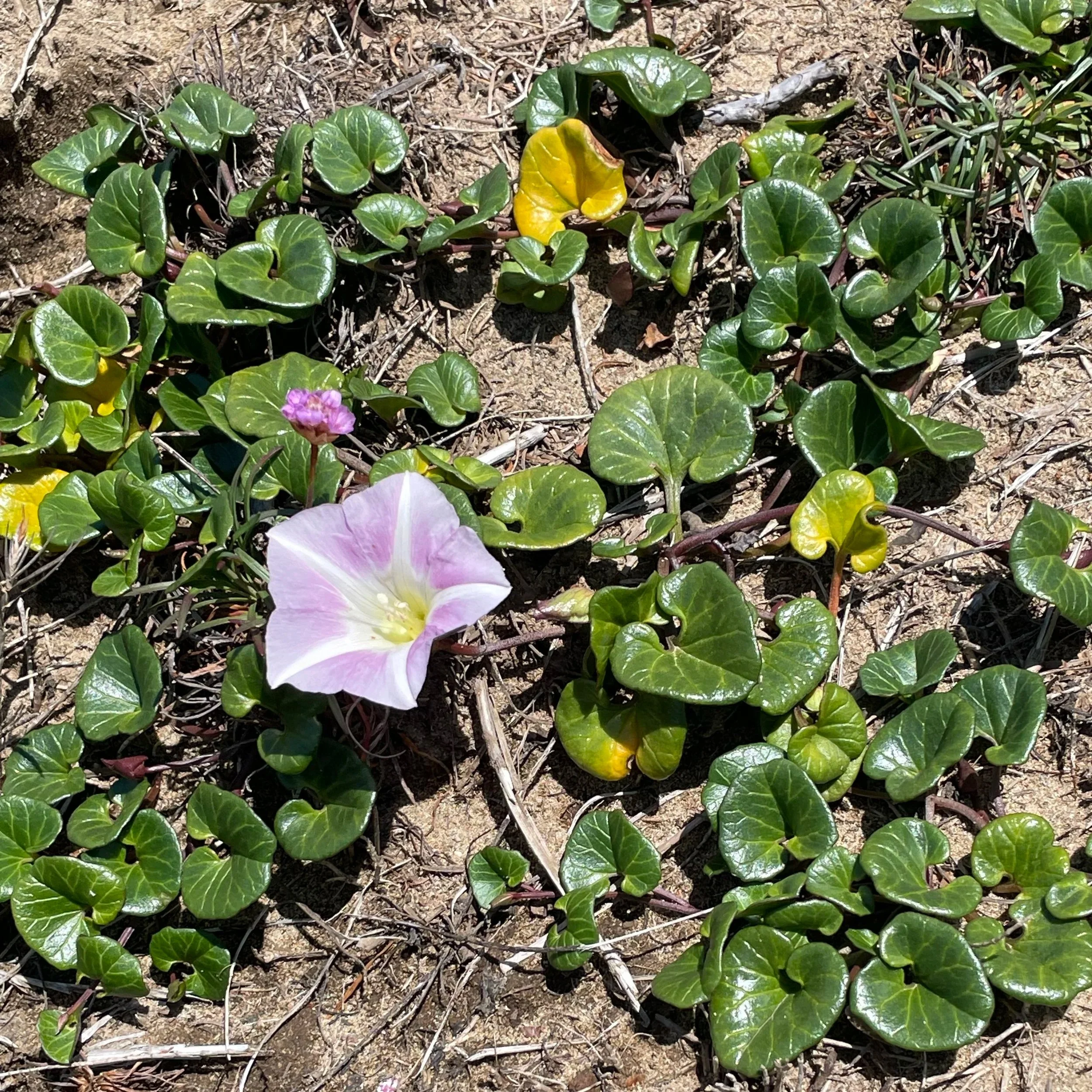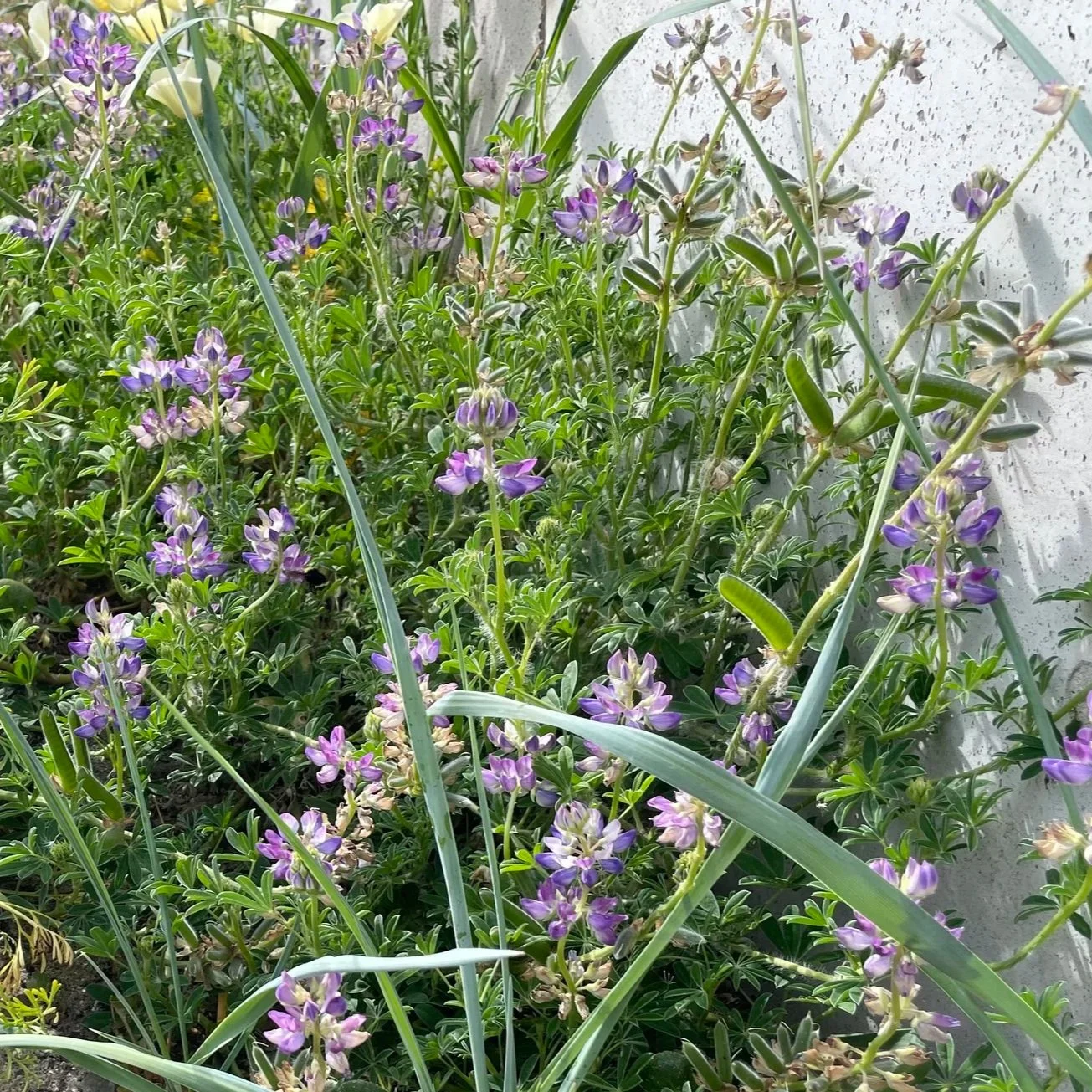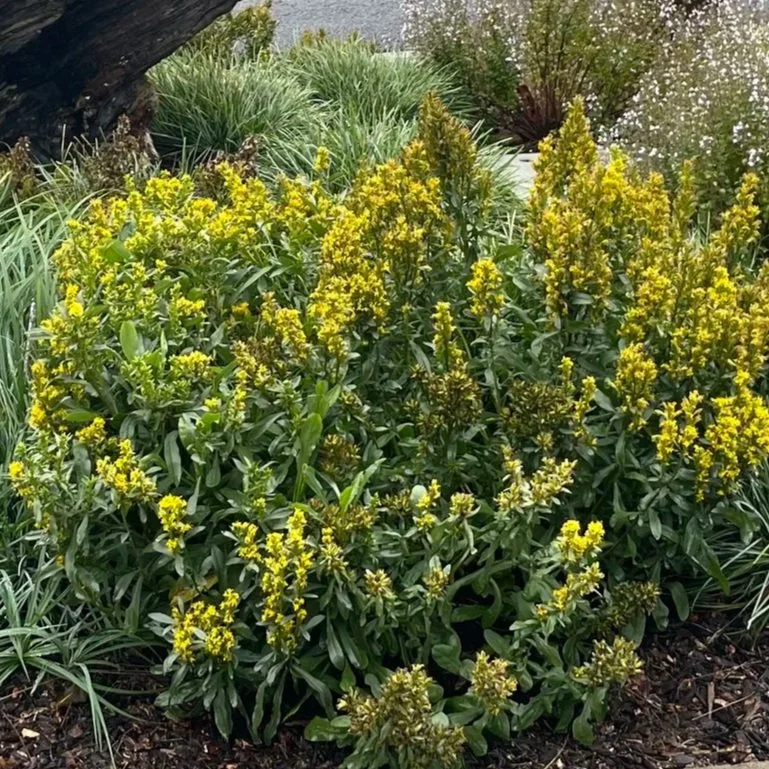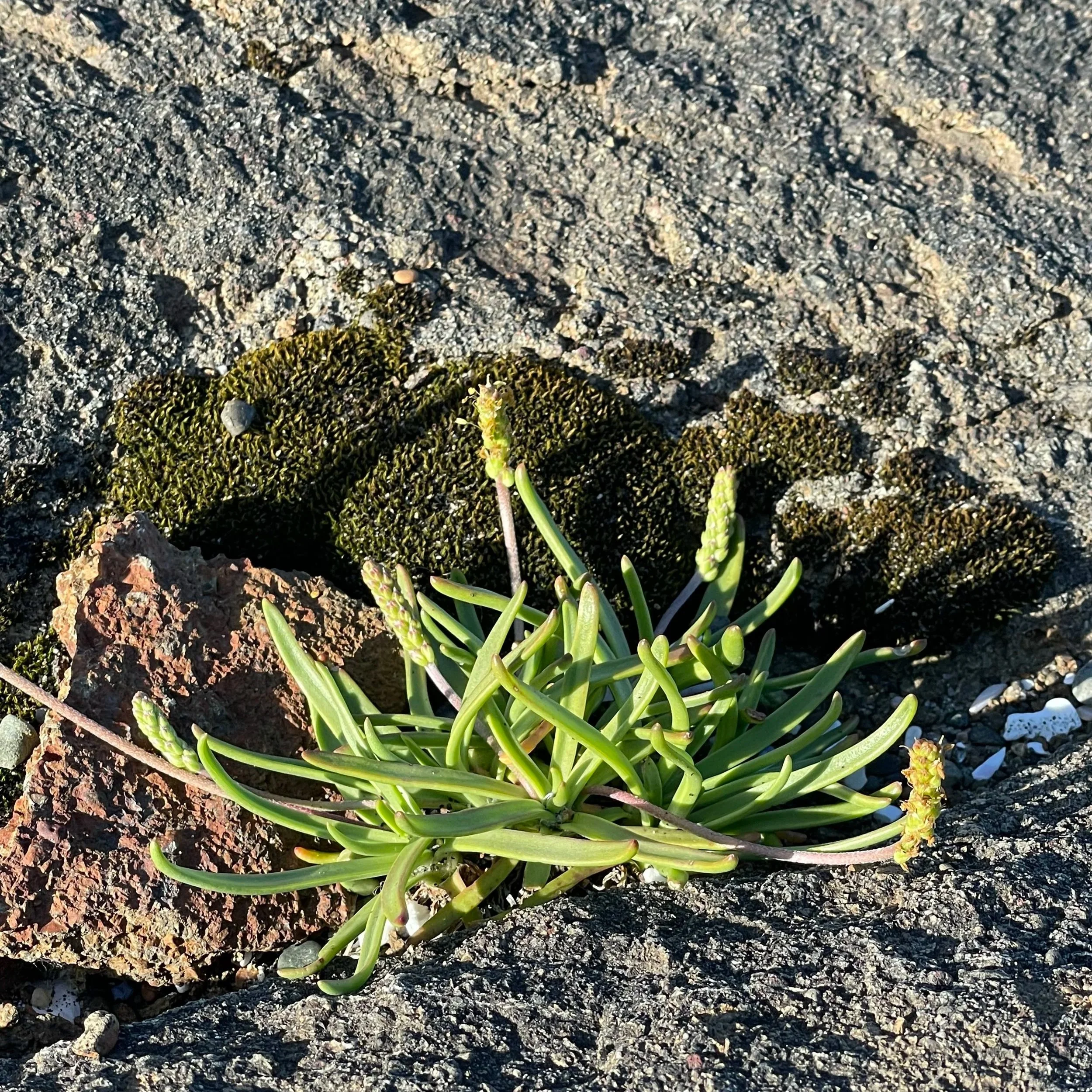Dune Treasures from Seed
American dunegrass (Leymus or Elymus mollis) grows naturally along the Oregon Coast dunes. It has been planted here in beach sand using plugs. In the fall, Beach Lupine (Lupinus littoralis) and Yellow Sand Verbena (Arbonia latifolia) were sown from locally collected seeds. California poppy ‘Ivory Castle’ seeds were also sown for some visual appeal in the first year. While not native to this exact area, California poppy thrives nearby and is a good early colonizer of sand.
Guess what? Even at the beach, there is more to grow than beachgrass. A backyard dune with all the salt spray, blowing dry sand, and ferocious Oregon Coast winds can’t stop these native dune flowering perennials that not only survive but thrive to support a bevy of beneficial insects, moths, butterflies, bees, birds, and beetles. It is best to grow these fast-growing gems from seed sown in fall. Seed can be hand-collected locally or sometimes purchased on Etsy or other plant seed source websites. It helps to give a little water the first growing season to promote lush growth, but otherwise fully drought tolerant. Now you know, what are you waiting for?
Yellow Sand Verbena
Abronia latifolia
One of the first plants to show up in un-stabilized blowing dune sand so a great starter plant for anyone with a backyard dune to try. Ground-hugging cheerful perennial and host plant for the caterpillar of the sand dune moth, spotted moth, and the yellow woolly bear moth. It is also host in combination with silver beachweed (Ambrosia chamissonis) to the Oregon plant bug—a species of concern to the Xerces society. Beguiles passerbyer’s with a sweet and spicy aroma similar to ginger and cardamon. The root was an Indigenous food source comparable in taste and sweetness to sugar beets. Very easy to grow from seed in un-stabilized sand.
Silver Beachweed
or Beach Bur
Ambrosia chamissonis
Semi-evergreen perennial with blue foliage and chartreuse flowers that attracts many beneficial insects and pollinators. Bears seeds that are a vital winter food source for many local bird species. A fragrant medicinal plant known for its strength and healing properties.
Seaside Daisy
Erigeron glaucus
A ray of sunshine in the coastal fog. Another cutie beloved by pollinators and gardeners alike. Plant this useful groundcover where it can room to spread and enjoy flowers all spring and summer, and even into fall with with deadheading. Can be grown from easily seed or purchase plants found in nurseries. Ranges in bloom color from pink to purple. A prolific seeder it is a good one get your dune garden started.
Silky Beach Pea
Lathyrus littoralis
Wild dune pea found from B.C. to California. Since 1930 there has been a 50-90% decline in the sparsely vegetated habitat favored by the pea. Considered a threatened species in Canada. The national rank for protection in the United States has not been assessed. Its attractive silvery bluish fuzzy leaves distinguish it from regular Beach Pea, Lathyrus japonicus. Soak seeds in warm water for 24 hours or scarify the seed by rubbing it with sandpaper to gently nick the seed coating prior to planting .
Pearly Everlasting
Anaphalis margaritacea
Coast Buckwheat
Eriogonum latifolium
Beautiful chalky silver leaves and antique pink flowers that fade to a striking rust color this classy gal is possibly historically native to the Oregon Coast, but nowadays typically found amidst the dunes of Humboldt County and in the San Francisco Bay area. We have grown from seeds started in flats and transplanted out in the spring with much success. May need protection at first from deer and rabbits, but worth it! Important food source for butterflies and moths. Don’t cut back spent flowers as food source for birds in winter months when little else is available.
Beach Primrose or Beach Suncup
Camissonia cheiranthifolia
Found on unstable sandy hillocks tucked within the back dunes. Typical ranges is from southern Oregon to Baja, but will grow as far north as Pacific city. Beloved by the large bumblebee. Often short-lived due to frosts but lives on through seedlings.
Beach Morning Glory
Calystegia soldanella
We often get calls from friends and client wondering if this is the dreaded invasive bindweed. And NO! Despite it’s similar appearance, it’s not even the same genus. A lovely trailing native dune plant that grows in straight sand easily from seed. Note the shiny rounded leaf that differs from bindweeds’ matte finish, pointed leaf. It also hugs the ground and won’t climb up other plants like bindweed.
Beach Lupine
Lupinus littoralis
Caution: Can be a gateway to growing plants from seed! Very easy to identify plants, collect, and sow in sand. If harvesting locally, be sure to get the lower growing purple species once the seed pods are dark gray or black—the yellow bush lupine is considered invasive.
Coast Goldenrod
Solidago spathulifolia
Excellent pollinator nectar source. Unlike it’s taller sisters, this species is low growing—only about 14-18” tall and will grow in almost any soil, even straight sand. Often found in back dune habitat.
Seaside Plantain
Plantago maritima
Very salt tolerant, it grows along rocky shorelines, bluffs, and salt marshy. It’s fleshy leaves are edible and highly nutritious with “salty green bean” like flavor. Can be eaten fresh, flash sauteed, or even frozen for future use. Excellent caterpillar host for Frittilary butterfly species.
Beach Pea
Lathyrus japonicus
This elegant nitrogen-fixer can be sown directly into shifting, blowing sand dunes or rocky crevices. It is excellent at binding sand dunes to help stabilize and prevent erosion. A lovely addition any tough coastal site, whether sandy or rocky.
Some back story…
European beachgrass (Ammophila arenaria) and American beachgrass (Ammophila breviligulata) were planted in the early 20th century to help stabilize our blowing beach sand. Presently, these species are considered invasive and have even cross-bred with each other to create a new variety that grows potentially more aggressively. Without the planting of the species, however, the Oregon Coast would look much different and many beachfront home sites would not be buildable. Consider planting our native dune grass (Leymus or Elymus mollis) and a mix of seeded in flowering perennials as a alternative.
This photo from 1949 shows very few structures west of “Erza Beachy Bridge” in Pacific City. The area west of the bridge was known as “The Turnaround” for vehicles as Cape Kiwanda Drive and the homes along it were non-existent. Bridge constructed in 1940 and later replaced. The blowing un-stabilized sand prior to European Dunegrass limited development. Photo courtesy of Lorraine Eckhardt
Pacific City circa 1949 looking at Erza Beachy Bridge from the southwest. Photo courtesy of Lorraine Eckhardt.















